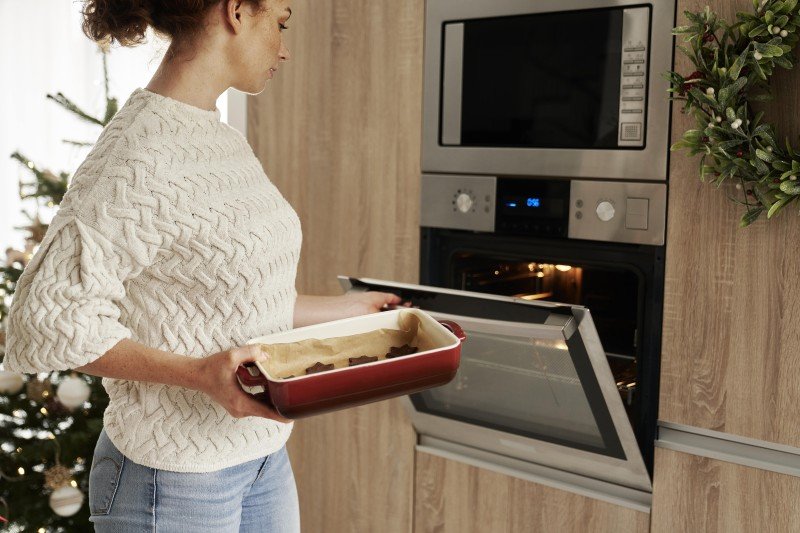20 Trailblazers Setting The Standard In Oven Hob
Understanding Oven Hobs: The Heart of Culinary Crafting
In the realm of modern kitchens, the oven hob stands out as an important appliance. Not only is it a main component for preparing a range of meals, but it also influences kitchen visual appeals, performance, and performance. This short article digs into the kinds of oven hobs, their features, advantages, and maintenance suggestions. In addition, it resolves some regularly asked questions to offer a thorough understanding of this vital kitchen appliance.
Kinds Of Oven Hobs
Oven hobs can be classified into several types based on their energy source and style. Comprehending these variations can help consumers make notified choices when choosing the ideal hob for their kitchen requires.
1. Gas Hobs
Gas hobs use natural gas or propane as fuel, offering exact temperature level control and immediate heat. Online Cooker Sales are favored by many chefs for their capability to offer visual feedback through flame.
Pros:
- Quick heat-up time.
- Exact temperature adjustments.
- Compatible with all kinds of pots and pans.
Cons:
- Requires a consistent gas supply.
- Security interest in open flames.
- Requires more maintenance.
2. Electric Hobs
Electric hobs are powered by electrical power and function smooth glass or ceramic surfaces. They often are available in 2 types: coil and strong.
Pros:
- Sleek look.
- No open flames, minimizing safety threats.
- Easy to clean.
Cons:
- Slower to heat up and cool off.
- May need particular cookware (induction).
- Some may have unequal heat distribution.
3. Induction Hobs
Induction hobs use electro-magnetic energy to directly heat up pots and pans. They just deal with ferromagnetic pots and pans.
Pros:
- Very energy-efficient.
- Quick heating and cooling times.
- Safe, as the surface remains reasonably cool.
Cons:
- Limited to specific types of pots and pans.
- Higher initial cost.
- Can produce noise when in use.
4. Strong Plate Hobs
These electric hobs include strong metal plates that warm up and retain heat for cooking.
Pros:
- Durable and reliable.
- Straightforward operation.
Cons:
- Takes time to warm up.
- Less efficient than induction and gas designs.
Hob Type
Heat Source
Aesthetic appeals
Maintenance
Gas Hobs
Gas
Standard
Moderate
Electric Hobs
Electrical power
Modern/Sleek
Low
Induction Hobs
Electromagnetic
Contemporary
Low
Solid Plate Hobs
Electrical power
Timeless
Typical
Features to Consider When Choosing an Oven Hob
When picking the perfect oven hob for your kitchen, there are a number of important features to take into account. These consist of:
- Size: Ensure the hob fits the designated space in your kitchen.
- Number of Burners: Consider your cooking design and how lots of burners you'll require.
- Control Type: Look for easy to use controls, whether touch-sensitive or knobs.
- Security Features: Many contemporary hobs consist of security procedures like flame failure gadgets or child locks.
- Energy Efficiency: Choose energy-efficient designs to save on energy bills and lower your ecological impact.
Benefits of Using an Oven Hob
The oven hob supplies a number of benefits that cater to both amateur cooks and professional chefs. Here are some essential benefits:
- Versatility: Whether boiling, frying, simmering, or sautéing, an oven hob accommodates different cooking techniques.
- Convenience: Many hobs come with additional functions like timers and automatic shut-off systems for added convenience in busy kitchen areas.
- Improved Cooking Control: The instant heat reactions of gas and induction hobs allow for much better control over cooking temperatures.
- Design Enhancement: Modern hobs can improve the general aesthetic of a kitchen, including a contemporary touch.
Maintenance Tips for an Oven Hob
To guarantee the longevity and effectiveness of an oven hob, correct upkeep is important. Here are some upkeep tips:
Regular Cleaning:
- Use a soft cloth and mild detergent to clean surface areas after each usage.
- For induction and ceramic hobs, prevent abrasive cleaners to avoid scratching.
Look for Wear and Tear:
- Inspect rubber seals and connections in gas hobs regularly for any damages or leakages.
- Guarantee electrical connections are safe and secure in electric hobs.
Professional Servicing:
- Schedule regular maintenance talk to a certified professional to avoid significant concerns.
The oven hob is an essential component in any kitchen, serving as a centerpiece for culinary undertakings. Whether choosing gas, electric, or induction, understanding the various types, functions, and upkeep requirements is vital for making a knowledgeable decision. A well-chosen hob not only enhances cooking effectiveness but also improves the total kitchen experience.
Regularly Asked Questions (FAQs)
1. What type of hob is best for a newbie?
Electric hobs are often preferred by novices due to their ease of usage and upkeep.
2. Can I use all pots and pans on an induction hob?
No, induction hobs require ferromagnetic cookware for them to work appropriately.
3. How do I know if my gas hob is working effectively?
Routinely inspect for even flame distribution and listen for any hissing sounds that might show leakages. If in doubt, seek advice from an expert.
4. Is a greater cost constantly much better for hobs?
Not always. While higher-priced designs might provide advanced functions, a number of mid-range products supply excellent performance and longevity.
5. Can I install a hob myself?
It is suggested to hire a professional, especially for gas hobs, due to security concerns and regional policies.
By comprehending the subtleties of oven hobs, home cooks can make a knowledgeable decision that lines up with their cooking ambitions and kitchen styles. Picking the best hob enhances both the cooking experience and kitchen visual appeals, making it a crucial investment for any home.
